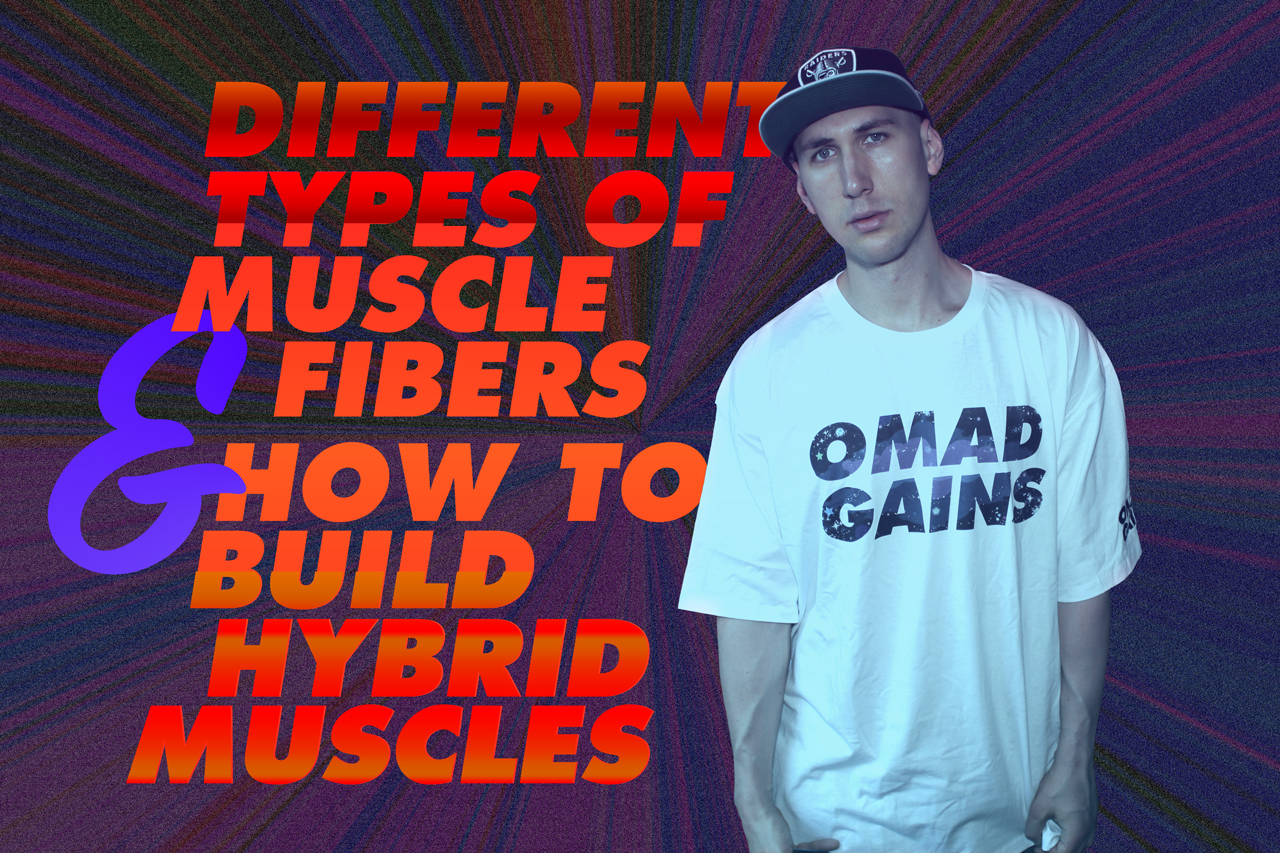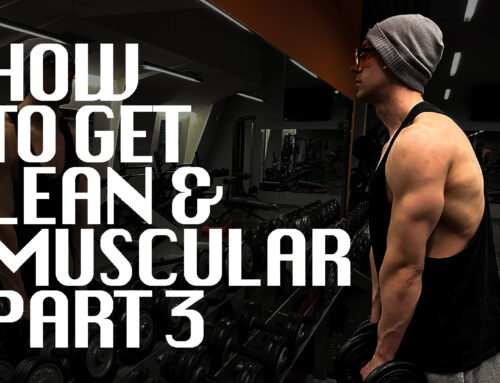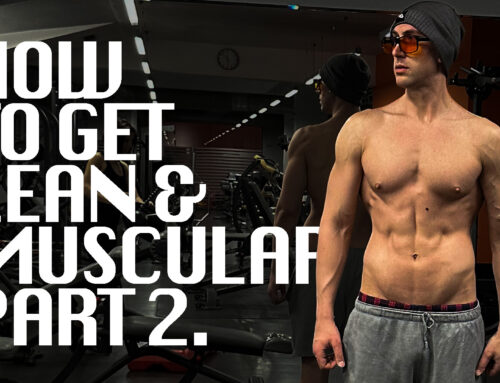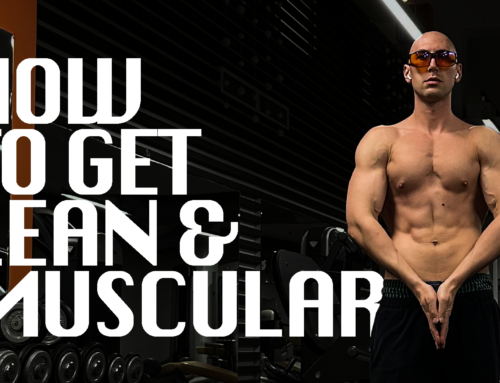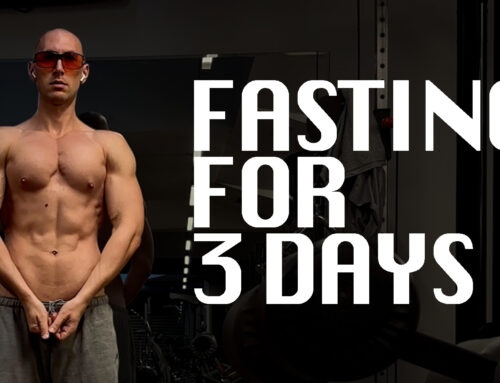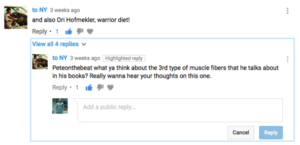
I got inspired to do this post, because of a comment I got recently on Youtube. Before I start I would like to thank the person for stopping on my page and commenting. Besides that I want to also thank all of my subscribers, readers and listeners for being interested in the content I create.
You are one of my biggest inspirations. Have no doubt about it.
In the paragraphs bellow I am discussing with you 2 very important subjects every true gym rat should be concerned of. Those are the different types of muscle fibers and how to train in order to develop the Type III hybrid muscles. With all of that being said lets begin.
There are three main types of muscle fibers found in the skeletal muscle. Those are Type I, Type IIa and Type IIb. The percentage of each vary for every single person and from one muscle to another. As an addition it has been theorized that Type IIc aka Type III fibers also exists. That type is also called hybrid or super muscle fiber.
TYPE I are slow twitch or red muscle fibers that generate ATP mostly through the aerobic system of energy transfer. Slow twitch fibers are very resistant to fatigue. Activities performed in the aerobic pathway call upon these muscle fibers. Therefore people who are high in slow twitch and lower in fast twitch are greatly suited to perform aerobic activities for longer periods of time. Those slow muscles are the smallest and work a lot more effectively in the use of oxygen for generating fuel. Even though they’re very resistant to fatigue and injury, their force output is very low.
TYPE II are broken down into two types. Those are Type IIa and Type IIb.
Larger in size, fast twitch – intermediate fibers they are a lot stronger than Type I fibers. Their glycolytic capacity is high, so they can produce high force output for longer time periods. Type IIa is also called “fast twitch oxidative”.
Because they prevail in bodies of sedentary individuals Type IIb muscle fibers are commonly referred as the couch potatoes of the muscle fibers. Many studies proved that close to 16% of the total muscle mass of sedentary people is of this fiber type. Type IIb are very strong but don’t have a lot of resistance to injury and fatigue. Same type is also called “fast twitch glycolytic”.
Typically Type II muscle fibers are way more thicker and
TYPE IIC AKA TYPE III
Commonly referred as hybrid fibers they are the result of “fusing” between Type IIb with the surrounding satellite cells. That usually happens when the muscle fibers are damaged from the training process and the extremely catabolic hormone cortisol is released to run the “cleanup” process. But in a scenario when the cortisol is blocked, Type IIb fuse with the surrounding them satellite cells. What stimulates that process is Insulin-like growth factor-1 aka IGF1.
Type III on the other hand utilize both aerobic and anaerobic pathways for energy metabolism and have higher mitochondrial density and greater athletic capacity. They are capable to burn significantly more fat while growing leaner and larger than the normal types. In fact some studies suggest that Type III muscles can burn up to 173% more fat then the normal Type I and Type II.
If you want to build bigger, stronger muscles that are also better and more effective at fat burning, developing more Type III muscle fibers is the way to go. In other words your goals is building muscle while losing fat at the same time, building those hybrid muscles is your best option. I am sure everything I just said sounds great, but also makes you wonder:
HOW TO TRAIN FOR TYPE III MUSCLE FIBERS
Have no doubt about it, in order to develop more of the hybrid muscles you have to train in a hybrid or combined way. Simple as it sounds, it basically means that instead of splitting your weight and cardio training in two different sessions, probably even on two different days, you should combine them into one so called combined or hybrid session. In other words you have to train Type II fibers as Type I. You have to perform resistant exercises with the intensity of cardiovascular training. Those workouts will make the Type IIb fibers increase their mitochondrial density and ultimately they’ll transform into Type III Hybrid muscles. Luckily there is whole branch of fitness training dedicated to this subject. Its name is “Long Strength”
LONG STRENGTH
In 1995 Dr. Leonard Schwartz invents the term “Long Strength”. The way he describes it is by calling it: “The ability to exert significant strength for extended periods of time”. Author of the “Heavy Hands” exercise system, Dr. Schwarts is the adopter of the concept ever.
In the mid 90’s nutrition and training innovator John Parrillo invents the concept of “100 rep giant sets”. Author of the books “High Performance Bodybuilding” and “50 Workout Secrets”, he explains that the program helps bodies of athletes building more mitochondria. Mitochondria are supplying systems of the muscle cells. Parrillo is huge advocate of training which makes the body increase the number of mitochondria. That also activates a process that converts ordinary muscle fibers into super muscles. The more mitochondria a human body has, the less fat it gains.
Do you know which of the modern day best selling books put that much if not even more emphasize on the relation between high performance and health of the mitochondria?
100REP GIANT OR EXTENDED SETS
Also called extended sets the system is based on training with 5 sets with 20 reps each. By doing those 5 different sets you also do 5 completely different exercises. There is no rest between the sets and as you probably already guessing the total number of reps is one hundred. All of them performed with insane intensity. After finishing one set you can rest for not more then one minute.
When you’re done with the rest, you immediately repeat the whole cycle again. Because it is challenging enough ever for advanced lifters, there are no drop sets nor rest pauses in this type of training.
CONTROLLED FATIGUE TRAINING OR CFT
By inventing the training system called “Controlled Fatigue Training” also known as CFT, the author of the revolutionary best selling book “Warrior diet” Ori Hofmekler becomes one of the pioneers of the so called “Long Strength Training”. Next to John Parrillo and Dr. Schwartz. Specially designed to develop the “Super Hybrid muscles” Ori Hofmekler’ training program helps you to achieve results in areas where the average fitness programs often fail.
The primary goals of the program are:
·Reaching the functional peak of your physical performance.
·Controlling your fatigue and using it as an advantage to better your results.
·Focusing on quality over quantity in terms of effectiveness of the training sessions.
·Not wasting too much time at the gym.
·Ori Hofmekler advocates short and very intense workouts. He also recommends the usage of the program in combination or as an addition to the “Warrior Diet” eating plan. He suggests the combination doubles the results.
MY TAKE ON THE LONG STRENTGH AND HYBRID MUSCLES
Even though I do not follow any of those programs, I am huge proponent of the idea of burning fat and building muscle at the same. I don’t think getting fat is something like temporary, but necessary side effect of getting more muscular. As a big fan of 70’s legends of bodybuilding the concept of bulking doesn’t sound appealing to me.
If you search on the internet you’ll find that most of the recommended methods are based on applying high intensity to things like lifting truck tires or carrying heavy sand bags. However I don’t think there is a single way of incorporating cardiovascular and resistant training in the same workout.
Ultimately your goals and purpose of going to the gym, will determine the selection of movements you’ll pick. Sure if you want a train like a cross fitter you can do it, but if you want to train like bodybuilder you can also do it. If you want to attain 70’s and 80’s inspired classic look with smaller waist and dramatic proportions you can do that as well.
What I really like about the mentioned program is that anyone can implement certain elements from them in order to improve his or her training. To a very big extend this is exactly what I do. This is also how I made my best gains training wise. Personally I I have to choose one of those programs I will definitely go with number 2 “the100rep extended sets”. The reason behind my choice is that the program is the only one specially designed for bodybuilding. In fact as long as for me I actually already train in manner very similar to that protocol.
My workouts are very short and intense. I barely take rest between the sets. In fact I train most of my body parts with supersets. The only rest I take is to move from one piece of equipment to another or to switch the position of my camera (just in case I’m filming some gym footage). Besides that I take just a bit of rest to pose/flex (that is really no rest) and to observe the pump in a scenario where I experiment with some different angles of specific movement.
I use plenty of reps and large variety of exercises. I take a bit more rest only when training legs. In particular on the exercises like: Squats, front squats deadlifts and leg presses. As long as for the extensions, sissy squats and leg curls I do them in supersets without any rest as well.
All of my sessions are no longer than 30 to 35 minutes max. I go to the gym by doing a burst walk and I do the same when coming back home. Regardless that I don’t shoot for 100rep giant sets, my sets are very extended, because the more reps I do, the longer period of time under tension I maintain. That allows me to throw more blood into specific area. That drags some fresh water, oxygen of course the nutrients that are already floating in my bloodstream.
To a very big extend my workouts look closer to one giant set with few hundred reps, but my training is mostly inspired by people like Serge Nubret and Vince Gironda and others. The only difference is that I use insane amounts of pre-exhaustion. Something that was not so popular during their era.
The short duration of the sessions allows me to keep very high frequency of training. Something I personally see as a killer tactic for natural bodybuilders. For me all of those things are part of a giant system I developed over the years of training and self hacking. That is how I made my best gains training wise.
I hope that makes sense.
Yours truly:
Peteonthebeat
- The Middle Pillar Meditation - March 21, 2020
- Outwitting The Devil Book Review - February 20, 2020
- Do Calories Matter? - July 2, 2019


